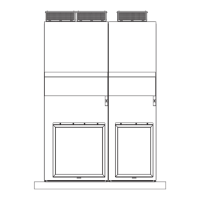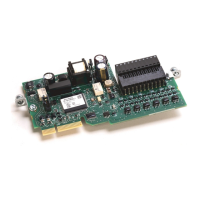Behavior models used in CIP Motion
Rockwell Automation Publication MOTION-RM003I-EN-P - February 2018 67
Aborting state, the power structure remains active (Power Structure Enabled
status bit set) as long as the stopping action takes to complete. In some cases, the
power structure must be immediately disabled so the axis may coast to a stop while
in the Aborting state. In any case, the drive will wait until the axis has reached zero
speed before transitioning to the Major Faulted state. Once the stopping
procedure is complete and the axis has reached zero speed, the axis transitions to
the Faulted state. The criteria for zero speed is based on Velocity Feedback being
less than 1% of motor rated speed or by criteria set by optional Zero Speed and
Zero Speed Time attribute values. In the case of a Frequency Control drive device,
Velocity Reference is used rather than Velocity Feedback. In some cases, such as
when the axis is stationary, this transition can be immediate.
When faults conditions are detected in the controller that are not visible to the
motion device, or when the motion device reports a Minor Fault condition, the
controller is responsible for bringing the axis to a stop, either directly using an Axis
Control state change request or motion planner stop, or indirectly using a fault
handler in the user program. If the Axis State reported by the motion device is
Stopping, then the controller sets the CIP Axis State to Aborting based on the
presence of the fault condition.
When an Abort Request is issued to the Motion Device Axis Object a Controller
Initiated Exception is generated. If the associated Axis Exception Action is set to
generate a Major Fault the drive stops the axis according to the configured
Stopping Action before transitioning to the Faulted state.
Faulted State
The Motion Device Axis Object defines a Major Faulted state that is identical to
the Stopped state (or, if a Shutdown fault action was initiated, the Shutdown
state) with the exception that there are one or more Faults active. In other words, a
Major Faulted axis is a Stopped (or Shutdown) axis with a Major Fault condition
present. The Motion Device Axis Object also defines a Minor Fault as a fault that
allows device operation to continue and does not impact the Axis State in the
motion device.
There is no such distinction between Major Fault and Minor Fault in the
controller; both Major Faults and Minor Faults reported by the drive result in the
axis transitioning to the Faulted state in the controller. Thus, in the controller it is
not generally true that a Faulted axis is a Stopped (or Shutdown) axis with a Fault
condition present. When the motion device reports a Minor Fault condition, or
when fault conditions are detected in the controller that are not visible to the
motion device, the controller is responsible for bringing the axis to a stop, either
directly using an Axis Control state change request or motion planner stop, or
indirectly using a fault handler in the user program. Until this is done, the Axis
State in the motion device may be something other than the Major Faulted state,
perhaps even in the Running state. This is reasonable given that the motion device
is only one component in a much bigger motion control system. The CIP Motion

